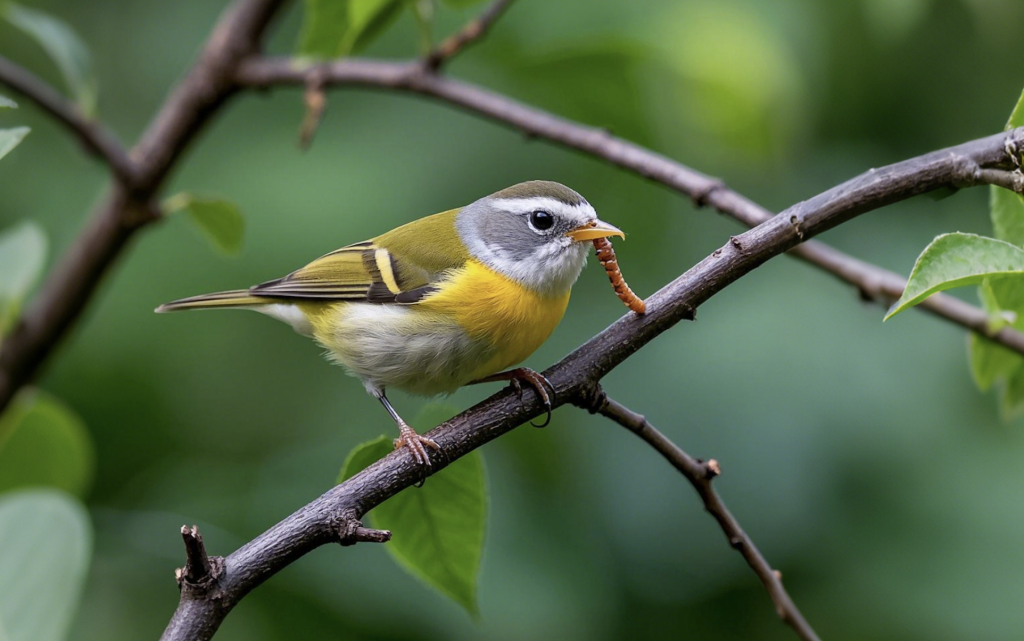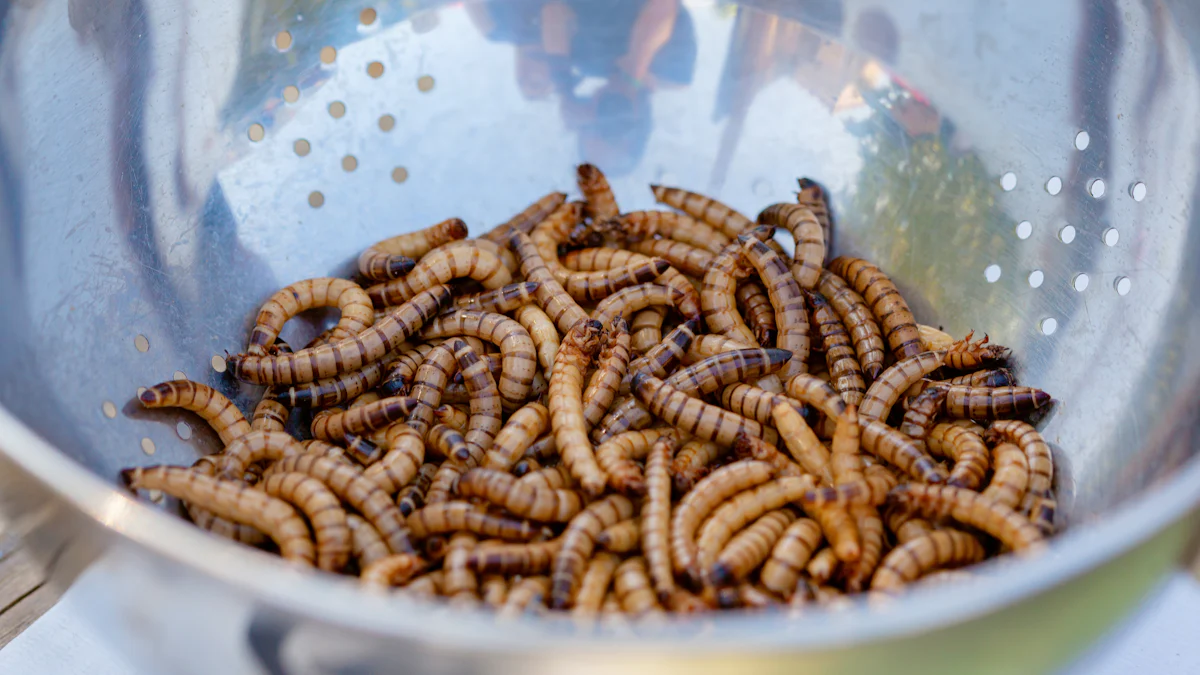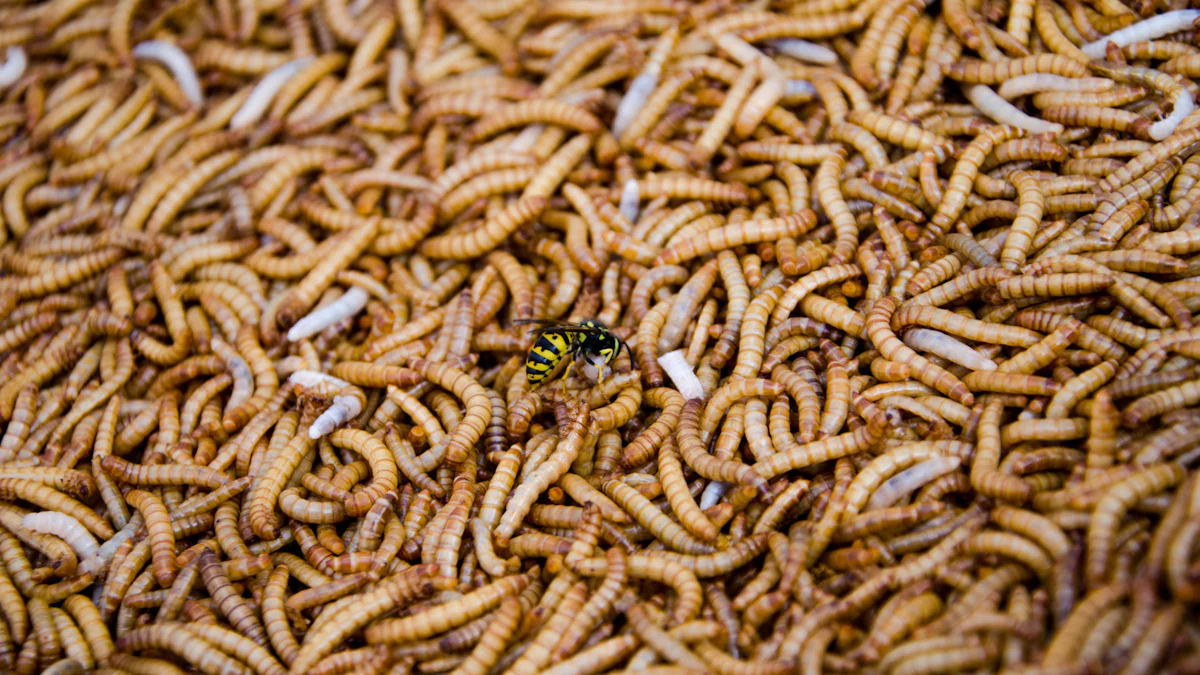
I’ve always found dried mealworms to be a fantastic treat for birds. They’re packed with protein, fiber, and essential fats, which makes them a natural part of many wild birds’ diets. You’ll notice birds like robins, wrens, and chickadees flocking to enjoy them. Bluebirds, woodpeckers, and nuthatches love them too! Unlike live mealworms for birds, dried ones are super convenient and easy to store. Plus, they’re safe and nutritious, giving birds the energy they need to thrive.
Key Takeaways
- Dried mealworms are healthy snacks for birds. They have 52.8% protein and 24.7% fat. This gives birds energy for migration and breeding seasons.
- Use a platform feeder to make mealworms easy to find. Soaking them in water makes them tastier and adds moisture.
- Dried mealworms are simpler to store than live ones. They don’t need a fridge and cost less, which is great for bird watchers.
Nutritional Benefits of Dried Mealworms

Protein and Energy Boost
I’ve always been amazed at how much nutrition is packed into dried mealworms. They’re like a superfood for birds! With a whopping 52.8% protein content, they’re far richer in protein than seeds or suet. This makes them perfect for birds during high-energy times like migration or breeding. Protein helps birds build strong muscles and feathers, which are essential for flying and staying healthy.
The fats in dried mealworms are another big plus. At 24.7%, they provide a quick energy boost that birds need to stay active. I’ve noticed that during colder months or when birds are preparing for long flights, they flock to mealworms for that extra energy. It’s like giving them a power bar to fuel their journey!
Essential Fats and Fiber
Dried mealworms aren’t just about protein and energy. They also contain essential fats and fiber that play a huge role in a bird’s health. The fats help birds stay warm and maintain their energy levels, especially in winter. Fiber, on the other hand, keeps their digestive systems running smoothly. Healthy digestion means birds can absorb all the nutrients they need to thrive.
Here’s a quick breakdown of their nutritional value:
| Nutrient | Value |
|——————|———|
| Crude Protein | 52.8% |
| Crude Fat | 24.7% |
| AD Fiber | 9.0% |
It’s no wonder so many birds, from robins to wrens, love them. They’re a natural part of many wild birds’ diets and provide everything they need to stay healthy.
Supporting Bird Health Year-Round
One thing I love about dried mealworms is how versatile they are. They’re not just for summer feeding. During winter, their high protein and fat content help birds stay warm and active. In spring, they support breeding birds by providing the nutrients needed for egg production and chick development.
Dried mealworms also contain small amounts of calcium, phosphorus, and other minerals that are vital for bone health and overall well-being. Whether it’s a chilly winter morning or a busy breeding season, I’ve found that dried mealworms are a reliable way to support birds year-round. Plus, they’re so much easier to store and handle than live mealworms for birds, making them a practical choice for any bird lover.
Feeding Dried Mealworms to Birds

How to Offer Dried Mealworms
I’ve found that offering dried mealworms in the right way can make all the difference in attracting birds. A platform or tray feeder works best. It keeps the mealworms visible and easy to access. I always make sure the feeder has sides to prevent spillage. If you’re like me and worry about rain, a feeder with a roof or drainage holes is a lifesaver. It keeps the mealworms dry and fresh.
Placing the feeder in a visible spot is key. Birds like robins, blue tits, and sparrows are more likely to visit when they can easily spot the food. Sometimes, I soak the dried mealworms in water before putting them out. This softens them and makes them even more appealing to birds. It’s a simple trick that works wonders!
Birding experts Kenn and Kimberly Kaufman suggest, “Soaking dried worms in lukewarm water before you put them out can make them more appealing.”
Should You Rehydrate Dried Mealworms?
Rehydrating dried mealworms is a great idea, especially during hot summer months. Soaking them in water softens their texture, making them easier for birds to eat. It also provides a source of hydration, which is crucial when water sources might be scarce. I’ve noticed that rehydrated mealworms are a hit with parent birds during the nesting season. Baby birds rely on moisture in their food, so this small step can make a big difference.
If you’re looking for an alternative to live mealworms for birds, rehydrated dried mealworms are a fantastic option. They combine the nutritional benefits of dried mealworms with the added hydration of live ones.
Seasonal Feeding Tips
Dried mealworms are a year-round favorite for me and the birds. In winter, their high protein and fat content help birds stay warm and energized. During the nesting season, they provide essential nutrients for parent birds and their chicks. I always soak the mealworms during this time to ensure the baby birds get enough moisture.
In summer, I’ve noticed that birds appreciate the hydration from rehydrated mealworms. It’s a simple way to support their health when natural water sources might dry up. Whether it’s robins, wrens, or starlings, dried mealworms are a reliable food source for many wild birds throughout the year.
Dried vs Live Mealworms for Birds
Convenience and Storage
When it comes to convenience, dried mealworms win hands down. I love how easy they are to store. You don’t need a fridge or any special care. Just keep them in an airtight container in a cool, dark place, like a cabinet or pantry. For maximum freshness, I sometimes store them in the freezer, where they can last up to a year.
Live mealworms, on the other hand, are a bit more demanding. They need refrigeration to stay dormant and fresh. Without it, they can become active or spoil quickly. Plus, handling live mealworms can be messy. I’ve found dried mealworms to be a much simpler and cleaner option for feeding birds.
Cost and Maintenance
Dried mealworms are also more budget-friendly. A pound of dried mealworms costs between $15-$25 and contains thousands of worms. In comparison, 1,000 live mealworms cost about $20. That’s a big difference in value!
Live mealworms require extra care, which adds to their cost. You need to feed them fresh vegetables like carrots or potatoes and provide a proper substrate for them to thrive. I’ve even used gel water sources to keep them hydrated without drowning. Dried mealworms eliminate all this hassle. You just pour them into a feeder, and you’re done!
Safety and Hygiene
Safety is another reason I prefer dried mealworms. They’re clean and ready to use, with no risk of spreading bacteria or pests. Live mealworms, while safe for birds, can be a bit tricky. They need careful handling to avoid contamination.
Organizations like the European Food Safety Authority have even approved mealworms for human consumption, which shows how safe they are. Still, I feel more comfortable using dried mealworms for birds. They’re hygienic, easy to manage, and provide the same nutritional benefits as live mealworms for birds.
Dried mealworms are a fantastic choice for feeding birds. They’re packed with protein, fiber, and fats that support muscle growth, digestion, and energy. Birds like robins, blue tits, and wrens love them. Their nutrients attract more species than seeds or suet. With proper feeding, they’re a practical, year-round option for bird lovers.
FAQ
Can all birds eat dried mealworms?
Not all birds eat dried mealworms. However, many wild birds like robins, blue tits, blackbirds, and sparrows enjoy them as part of their natural diet.
How often should I feed dried mealworms to birds?
I recommend offering them as a treat or supplement. A small handful daily works great. Birds also need variety, so mix them with seeds or suet.
Are dried mealworms better than live mealworms for birds?
Dried mealworms are easier to store and handle. They’re also safer and more convenient. Live mealworms for birds might appeal more to some species but require extra care.


